26.1 — 26.3 23
-
 Phantom Brush
Phantom Brush
-
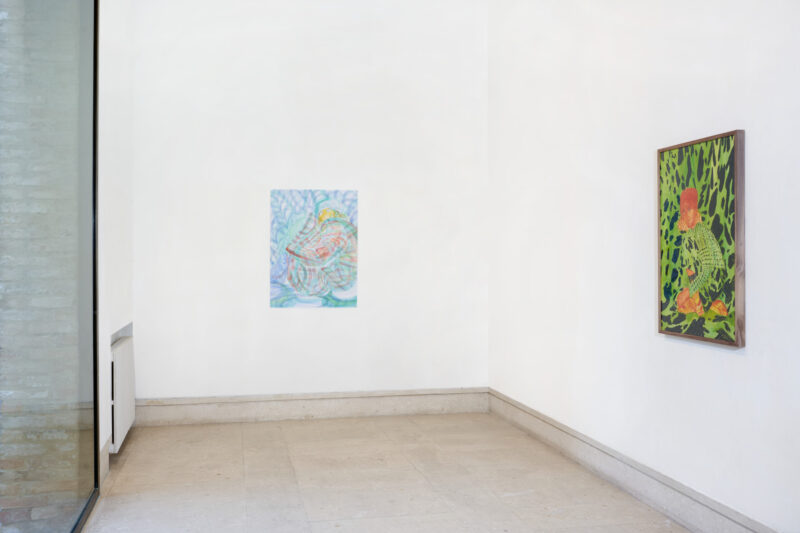 Phantom Brush
Phantom Brush
-
 Danilo Stojanovic
Danilo Stojanovic
-
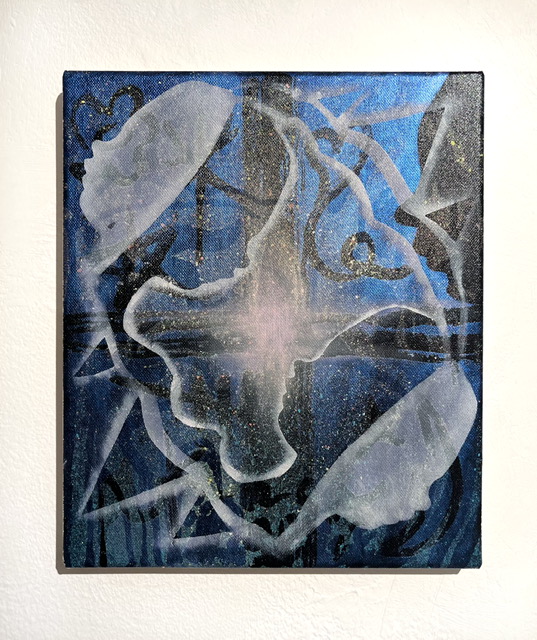 Alyssa Klauer, Paper Snowflake, 2022
Alyssa Klauer, Paper Snowflake, 2022
-
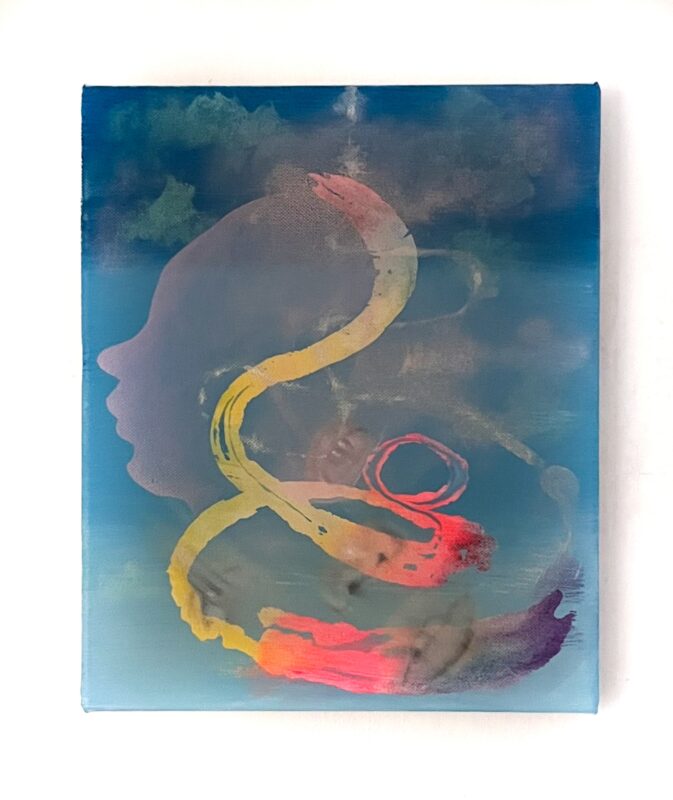 Alyssa Klauer, Phantom Brush, 2022
Alyssa Klauer, Phantom Brush, 2022
-
 Alyssa Klauer, The Magician, 2022
Alyssa Klauer, The Magician, 2022
-
 Hannah Tilson, Cowmouflage
Hannah Tilson, Cowmouflage
-
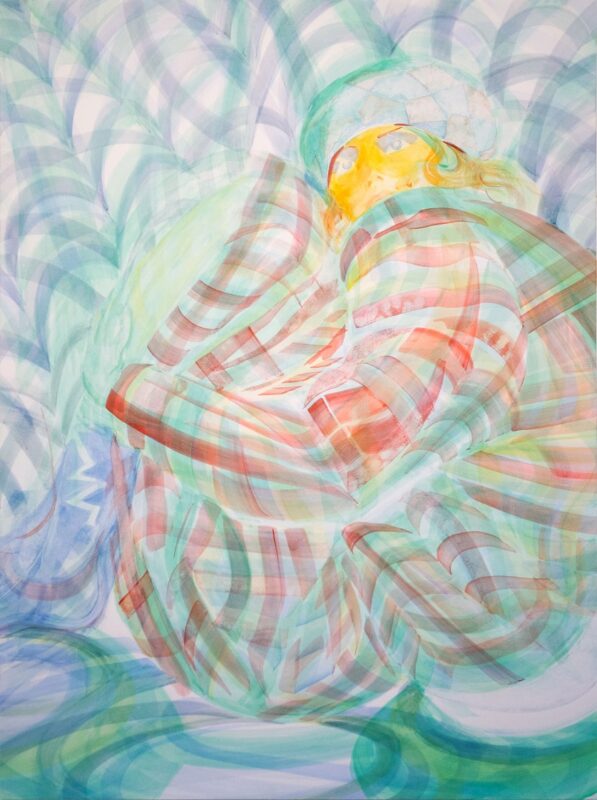 Hannah Tilson, Verve, 2022
Hannah Tilson, Verve, 2022
-
 Hannah Tilson, Zippy, 2022
Hannah Tilson, Zippy, 2022
-
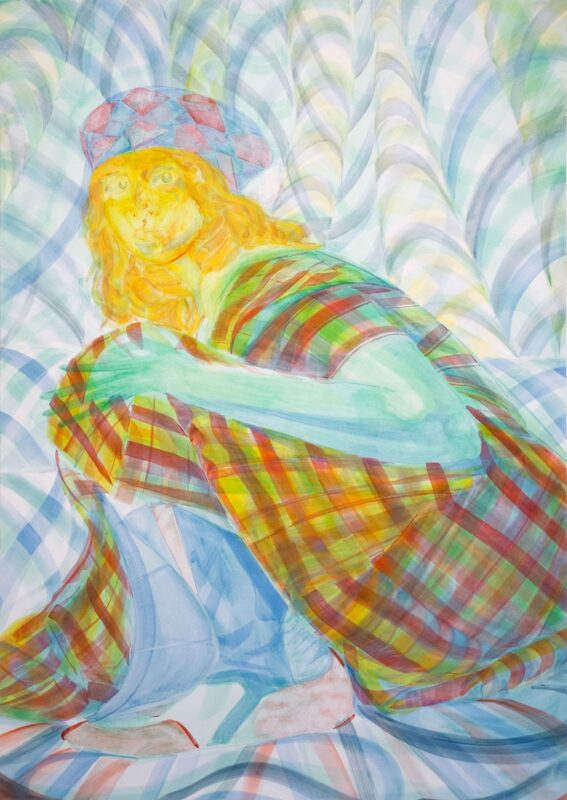 Hannah Tilson, Vivacity, 2022
Hannah Tilson, Vivacity, 2022
-
 Danilo Stojanović, Athophobia, 2022
Danilo Stojanović, Athophobia, 2022
-
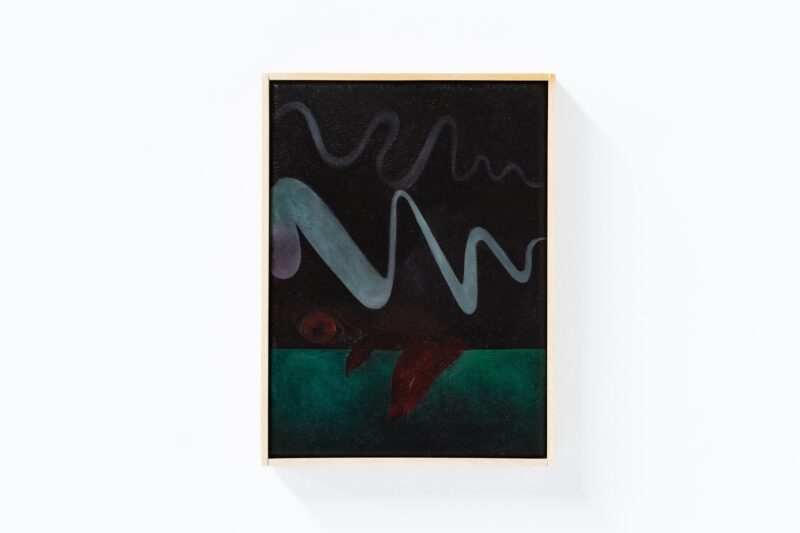 Danilo Stojanović, Smokescreen, 2022
Danilo Stojanović, Smokescreen, 2022
-
 Danilo Stojanović, The Foreteller, 2022
Danilo Stojanović, The Foreteller, 2022
-
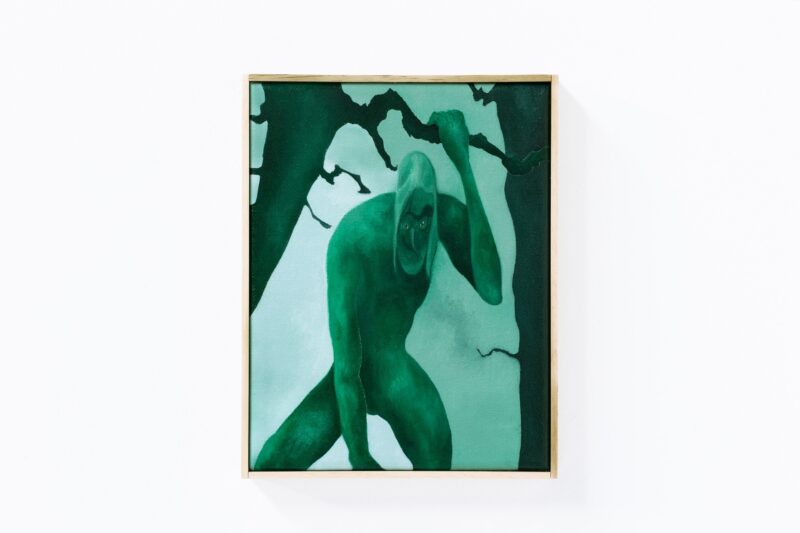 Danilo Stojanović, Ghoul, 2021
Danilo Stojanović, Ghoul, 2021
26.1 — 26.3 23
Phantom Brush
testo di Edoardo Monti
Effetti ottici, mondi paralleli, delicate finiture e dettagli fantasmagorici si esplicitano in spazi psicologici intensi, coinvolgendo e riunendo immagini care alle memorie individuali. Phantom Brush, titolo che trae ispirazione dall’omonimo dipinto in mostra di Alyssa Klauer (1995, USA), ci accompagna attraverso inedite pitture di tre artisti che hanno partecipato alla residenza presso Palazzo Monti tra il 2022 e 2023: Hannah Tilson (1995, UK), Danilo Stojanović (1986, Croazia) e Klauer.
La sfaccettatura concettuale che accomuna i tre pittori emerge anche tramite le scelte dei mezzi e materiali: cornici d’artista, olio su lino e cotone, trame della tela ora fitte ora più spesse, pigmenti naturali su carta per acquarello amalgamati con un ingrediente noto solo all’artista, inchiostri su ruvidi fogli tagliati con precisione o talvolta strappati a vivo. Fatta eccezione per quattro acquerelli di Tilson, i volumi relativamente contenuti dei lavori invitano ad avvicinarci ad essi, permettendo al nostro campo visivo di dedicare loro l’attenzione meritata. Piccoli grandi lavori.
Come nella sindrome dell’Arto Fantasma, la sensazione anomala di persistenza di un arto dopo la sua scomparsa, così in Phantom Brush percepiamo ancora le pennellate che, strato dopo strato, hanno dato vita a questi lavori: delicate per Tilson, che presenta acquarelli su carta con pattern geometrici; velate per Stojanović, che generano un’atmosfera fluida e mutevole nelle piccole tele che gli individui queer spesso sperimentino un ritardo nella crescita sentimentale o una seconda adolescenza quando provano esperienze che hanno il potere di piegare il tempo, come il coming out in età post-adolescenziale e adulta.
I dipinti catturano infatti il desiderio di riappropriarsi dei ricordi di un’infanzia etero-temporale, la precarietà di un futuro accorciato e la bellezza della rinascita queer. Le tele sono cariche di un approccio unico al colore: la luce trafigge i soggetti dell’opera come un fantasma e si manifesta attraverso una moltitudine di tecniche che includono lo stencil, la tintura e lo schizzo di colore. Le opere sono costruite su una base di effetti visivi: finte finiture, finti mondi e qualità fantasmagoriche.
Klauer richiama figure composite per coinvolgere e riunire immagini incongruenti e per creare uno spazio psicologico intenso. Le opere sono oniriche, la loro propensione alla trasformazione è radicata nella loro frammentazione. Questa frammentazione manifesta lo status psicologico di coloro passano da uno spazio onirico interno a una realtà esterna, una rinascita spirituale e fisica. S
i distaccano dal mono-genere i dipinti di Stojanović, che spaziano dal surrealismo alla natura morta, dall’estetica gotica ai thriller fanatascientifici. Nato in Croazia ma veneziano di adozione, abbraccia i canoni di una città che per tanti anni ha chiamato casa: una tavolozza di colori acquatici, immagini che si immergono una nell’altra, figure liquide che simboleggiano il tessuto fondamentale delle nostre vite e allo stesso tempo la forza creativa, dipinti che paiono esser stati realizzati tutti alla stessa ora, al crepuscolo. I titoli delle tele forniscono.
The 2023 exhibition programme of the A plus A gallery will begin with the group exhibition “Phantom Brush” curated by Edoardo Mon- ti.
The exhibition is the result of a collaboration between the A plus A gallery and the cultural centre and artists’ residence Palazzo Monti in Brescia, which for some years now has become an international hot- bed of talent, particularly in the field of painting. For this occasion, Edoardo Monti has selected the works of Alyssa Klauer (1995, USA), Hannah Tilson (1995, UK) and Danilo Stojanović (1989, Croatia), whi- ch were created during their residency.
The title of the exhibition is inspired by Klauer’s painting of the same name, one of the first works that Edoardo Monti saw in the American artist’s studio during his residency at Palazzo Monti, and which un- consciously triggered the dialogue with Tilson and Stojanović. In fact, the three of them construct their works on the basis of visual effects, creating parallel worlds, delicate finishes and phantasmagorical de- tails that are expressed in intense psychological spaces, involving and bringing together images dear to individual memories.
Stojanovic’s pictorial poetry, rich in dichotomies and rooted in arti- stic movements with antagonistic values, enters into dialogue with the paintings of Tilson, who for “Phantom Brush” presents works that take us back to her Scottish origins. Klauer enters the conversation with small but powerful canvases, dreamlike works that feature layers of saturated yet transparent paint.
Alyssa Klauer is a painter who lives between New Haven, Con- necticut and Brooklyn, New York. She received her BFA from the Maryland Institute College of Art in 2017 and her MFA from Cran- brook Academy of Art in 2019. His work has been exhibited at the Museum of Museums in Seattle, Fredericks and Freiser Gallery and Sean Kelly Gallery in New York, among others. Her work meditates on ‘Queer Time’, the idea that Queer individuals often experience a second adolescence when confronted with experiences such as co- ming out. Alyssa Klauer’s paintings are characterised by a unique approach to colour. Layers of saturated yet transparent paint are in- tuitively combined to create a ghostly, iridescent luminosity. She uses composite figures to engage and bring together incongruent images to create an intense psychological space. This fragmentation appears as a transition of the figures between an internal dream space and an external reality.
Hannah Tilson, born in 1995, lives and works in London. She gradua- ted from the Slade School of Fine Art in 2018, and studied at the New York Studio School She completed a postgraduate diploma at the Royal Drawing School in 2021. Hannah Tilson was shortlisted for the Ruth Borchard Self Portrait Prize in 2021.
artist residence in 2017, where he exhibits his personal collection and organises 40 exhibitions in five years, including at museums and pri- vate galleries. A member of the board of directors of the GAMeC Club, the Italian Art Trust and the selection committee of the Col- lectible fair in Brussels, Monti is also director of Belle Arti, a cultural association chaired by Massimo Minini, and collaborates with ArtVe- rona.
In the heart of Brescia, in a historic 13th-century building decorated with frescoes dating back to 1750, there is an unprecedented artist’s residence, Palazzo Monti. Converted into dynamic ateliers, the Palaz- zo’s spaces take on a new life and are used from early morning until late at night by creatives who share their daily lives and experiment with different artistic practices: painting, photography, sculpture, visual arts and design. Selected anonymously by a committee of international industry experts and supported by the direction of the residency’s founder, during their stay the participants are invited to immerse themselves in a unique context conducive to creativity.
To date, over 200 artists from 50 countries have created paintings and prints, works and objects in ceramic, iron, bronze, marble or wood inspired by the savoir-faire of the Italian territory. Completely independent, the project was founded in 2017, financed and curated by Edoardo Monti, a collector and curator of Bergamo origins. Bu- ilding a dialogue between international artists and the Italian craft community and disseminating it through the works that will travel around the world, this is Edoardo Monti’s intent.